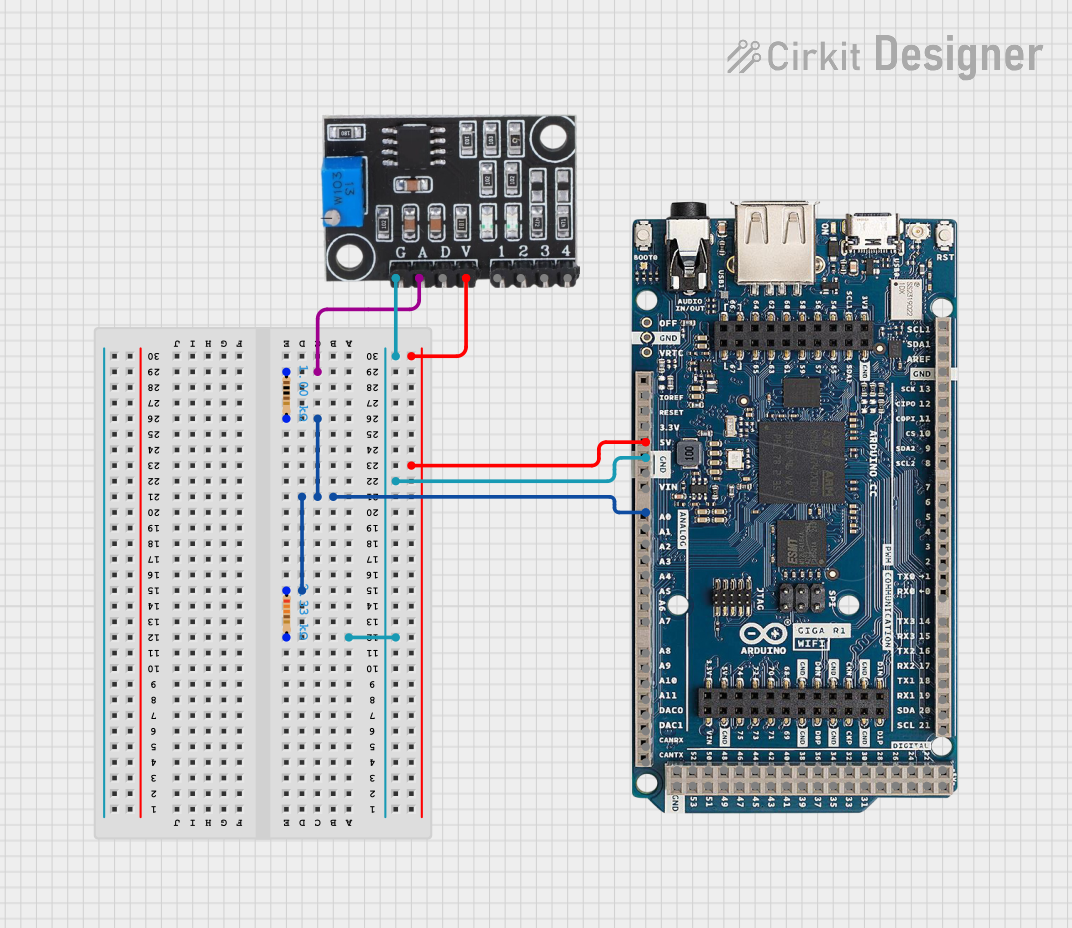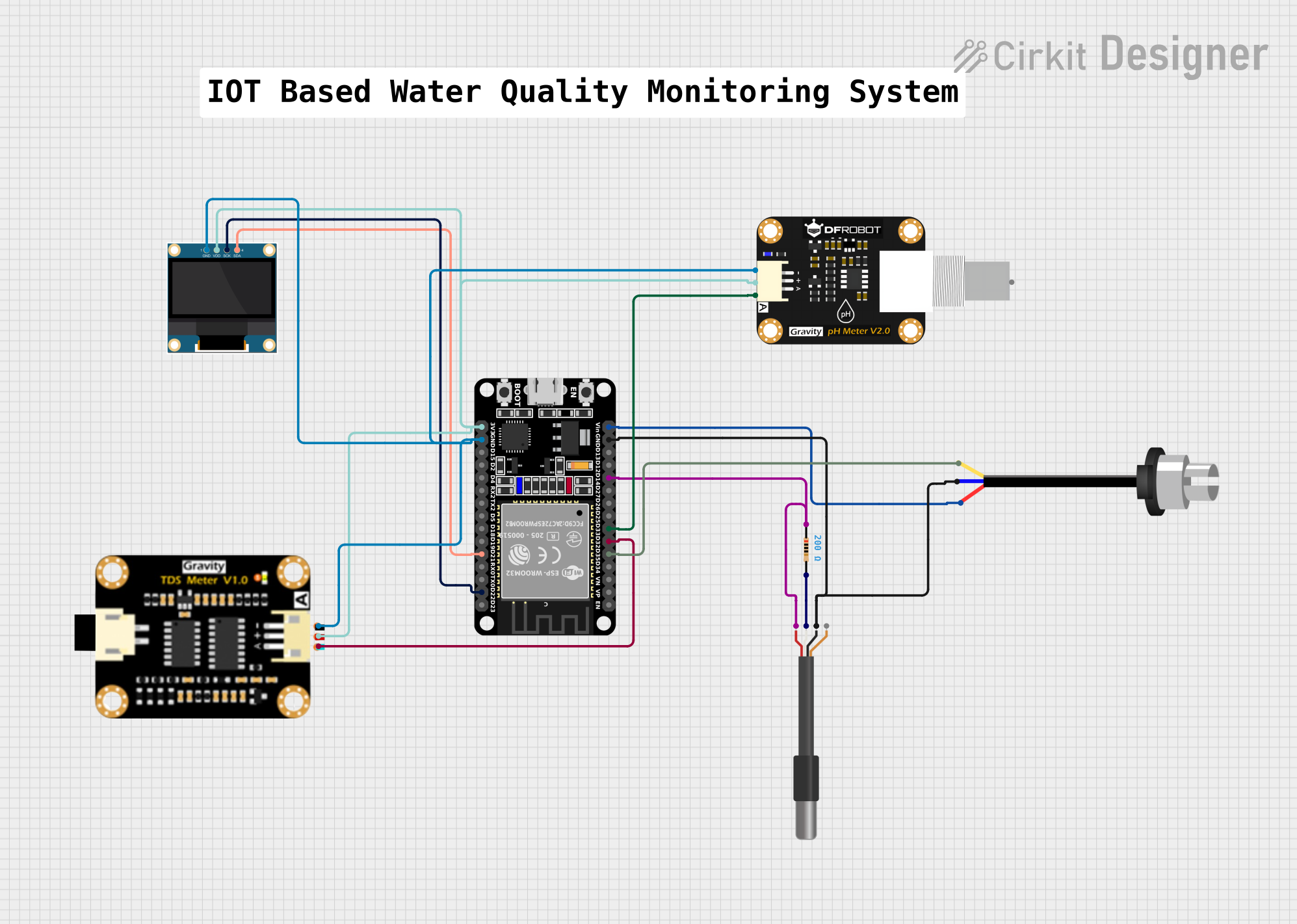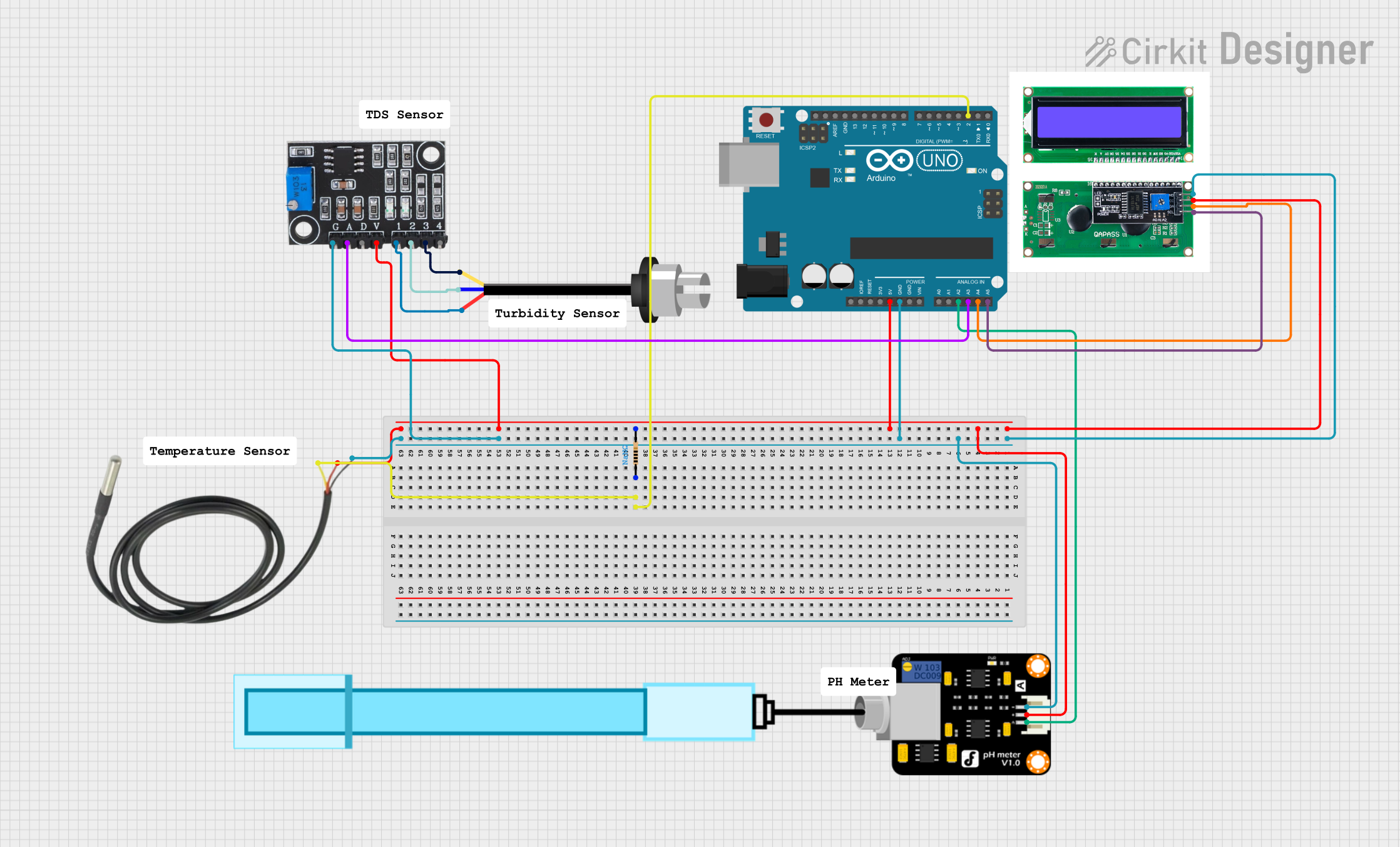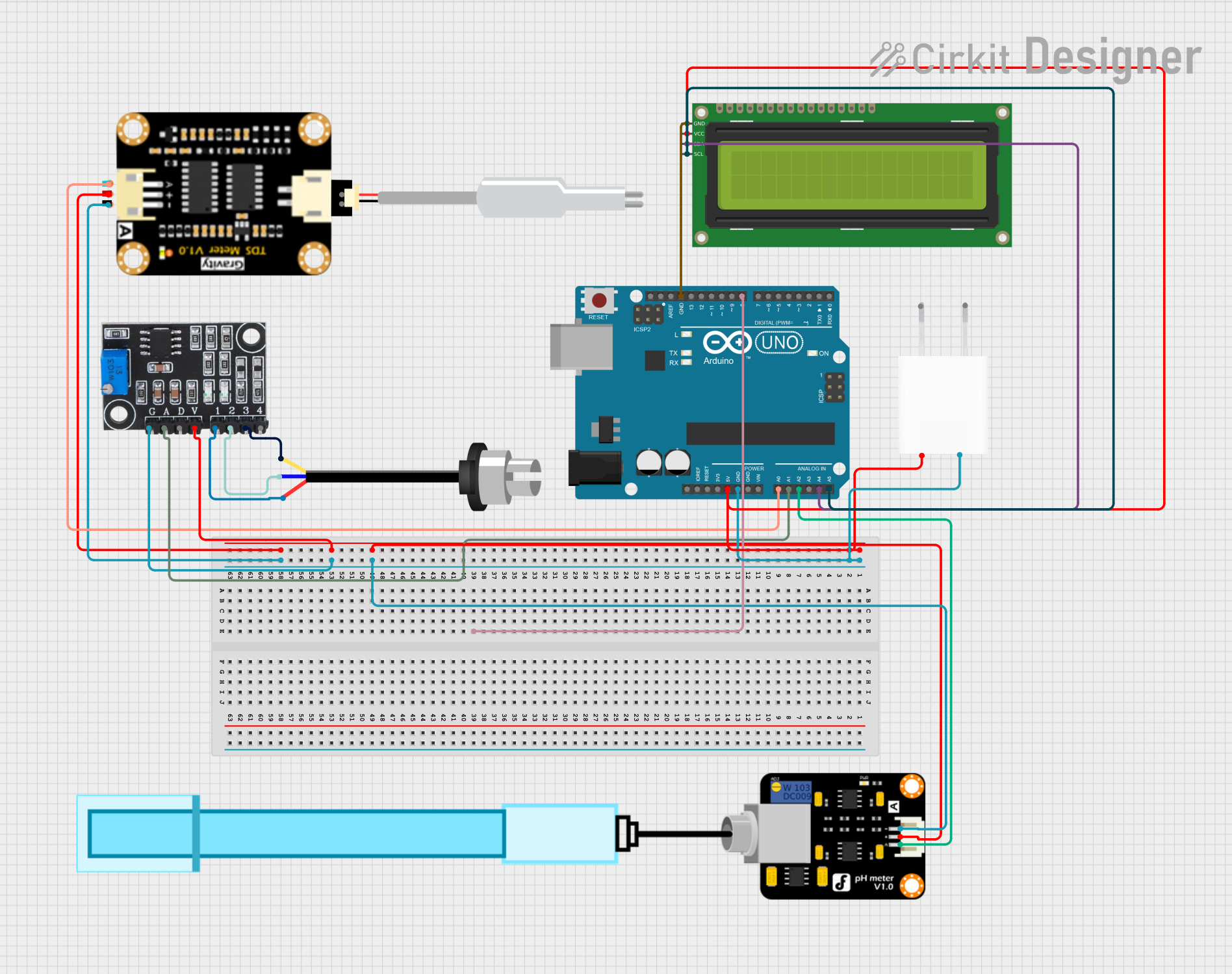
How to Use Sonda Sensor Turbidez / turbidity : Examples, Pinouts, and Specs

 Design with Sonda Sensor Turbidez / turbidity in Cirkit Designer
Design with Sonda Sensor Turbidez / turbidity in Cirkit DesignerIntroduction
The Sonda Sensor Turbidez, commonly known as a Turbidity Sensor, is an electronic device designed to measure the turbidity of a fluid. Turbidity is an optical characteristic of water and is an indication of the concentration of suspended particles, which can include sediment, microorganisms, and other pollutants. This sensor is crucial in various applications such as water quality monitoring, environmental testing, and in the process control of various industries like food and beverage, pharmaceuticals, and water treatment facilities.
Explore Projects Built with Sonda Sensor Turbidez / turbidity

 Open Project in Cirkit Designer
Open Project in Cirkit Designer
 Open Project in Cirkit Designer
Open Project in Cirkit Designer
 Open Project in Cirkit Designer
Open Project in Cirkit Designer
 Open Project in Cirkit Designer
Open Project in Cirkit DesignerExplore Projects Built with Sonda Sensor Turbidez / turbidity

 Open Project in Cirkit Designer
Open Project in Cirkit Designer
 Open Project in Cirkit Designer
Open Project in Cirkit Designer
 Open Project in Cirkit Designer
Open Project in Cirkit Designer
 Open Project in Cirkit Designer
Open Project in Cirkit DesignerCommon Applications and Use Cases
- Monitoring and controlling turbidity in water treatment plants.
- Quality control in beverage production (e.g., beer clarity).
- Environmental monitoring of natural water bodies.
- Research applications in sediment transport studies.
Technical Specifications
Key Technical Details
- Operating Voltage: 5V DC
- Output Signal: Analog (0-4.5V DC), proportional to turbidity levels
- Measurement Range: 0-3000 NTU (Nephelometric Turbidity Units)
- Operating Temperature: 0-50°C
- Response Time: <500ms
Pin Configuration and Descriptions
| Pin Number | Name | Description |
|---|---|---|
| 1 | VCC | Power supply (5V DC) |
| 2 | GND | Ground connection |
| 3 | AOUT | Analog output signal |
| 4 | DOUT | Digital output (optional, not used in all models) |
Usage Instructions
How to Use the Component in a Circuit
- Connect the VCC pin to a 5V power supply.
- Connect the GND pin to the ground of the power supply.
- Connect the AOUT pin to an analog input on your microcontroller (e.g., Arduino UNO).
- (Optional) Connect the DOUT pin to a digital input if your model supports digital output.
Important Considerations and Best Practices
- Ensure that the sensor is properly calibrated before use.
- Avoid exposing the sensor to direct sunlight as it can affect the readings.
- Keep the sensor clean and free from obstructions that could affect its accuracy.
- Use a consistent and stable power supply to prevent fluctuations in readings.
Example Code for Arduino UNO
// Define the analog input pin for the turbidity sensor
const int turbidityPin = A0;
void setup() {
// Initialize serial communication at 9600 baud rate
Serial.begin(9600);
}
void loop() {
// Read the analog value from the sensor
int sensorValue = analogRead(turbidityPin);
// Convert the analog value to voltage
float voltage = sensorValue * (5.0 / 1023.0);
// Print the voltage to the Serial Monitor
Serial.print("Turbidity Voltage: ");
Serial.println(voltage);
// Delay for a stable reading
delay(1000);
}
Troubleshooting and FAQs
Common Issues Users Might Face
- Inconsistent Readings: Ensure that the sensor is not exposed to varying light conditions and that the water sample is not disturbed during measurement.
- No Readings or 0V Output: Check the power supply and connections to the sensor. Ensure that the sensor is not damaged.
Solutions and Tips for Troubleshooting
- Calibration: Regularly calibrate the sensor using standard turbidity solutions to maintain accuracy.
- Cleaning: Gently clean the sensor's optical components with distilled water and a soft cloth to remove any debris or buildup.
FAQs
Q: Can the sensor be submerged in water? A: Yes, the sensor is designed to be submerged, but ensure that only the sensing part is immersed and that the electronic components remain dry.
Q: How often should the sensor be calibrated? A: Calibration frequency depends on usage, but it is generally recommended to calibrate the sensor before each critical measurement session or after any maintenance.
Q: What is the lifespan of the turbidity sensor? A: The lifespan can vary based on usage and maintenance, but with proper care, the sensor can last for several years.
Q: Is the sensor compatible with all types of microcontrollers? A: The sensor outputs an analog voltage signal, which can be read by any microcontroller with an analog-to-digital converter (ADC).